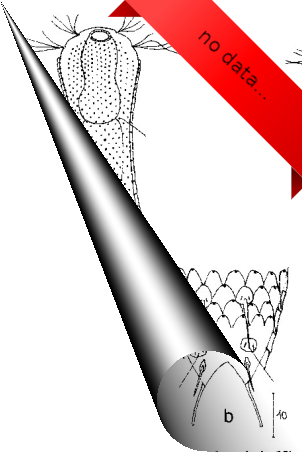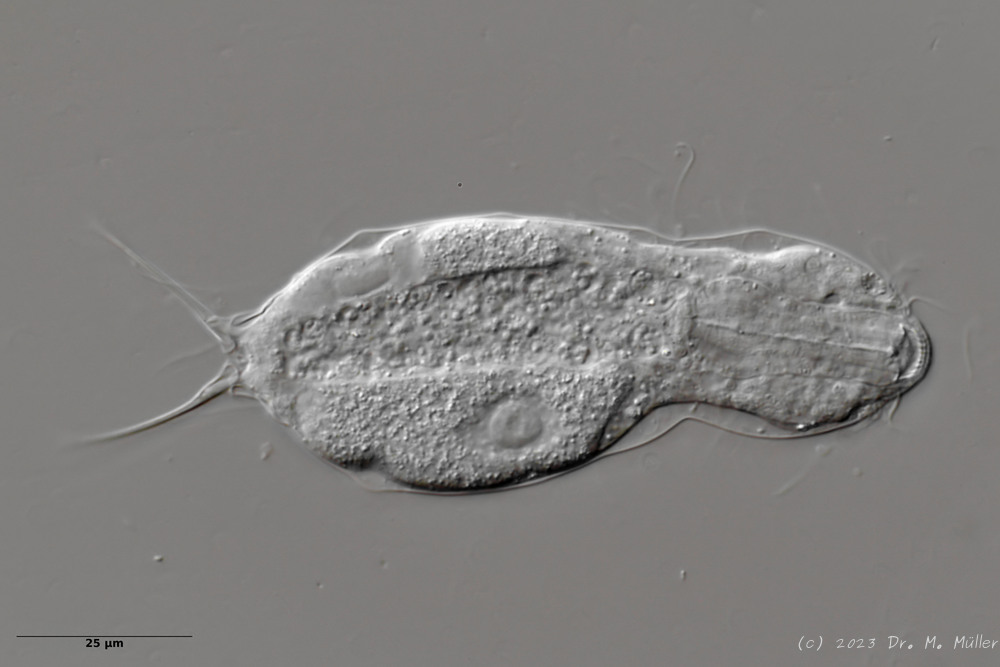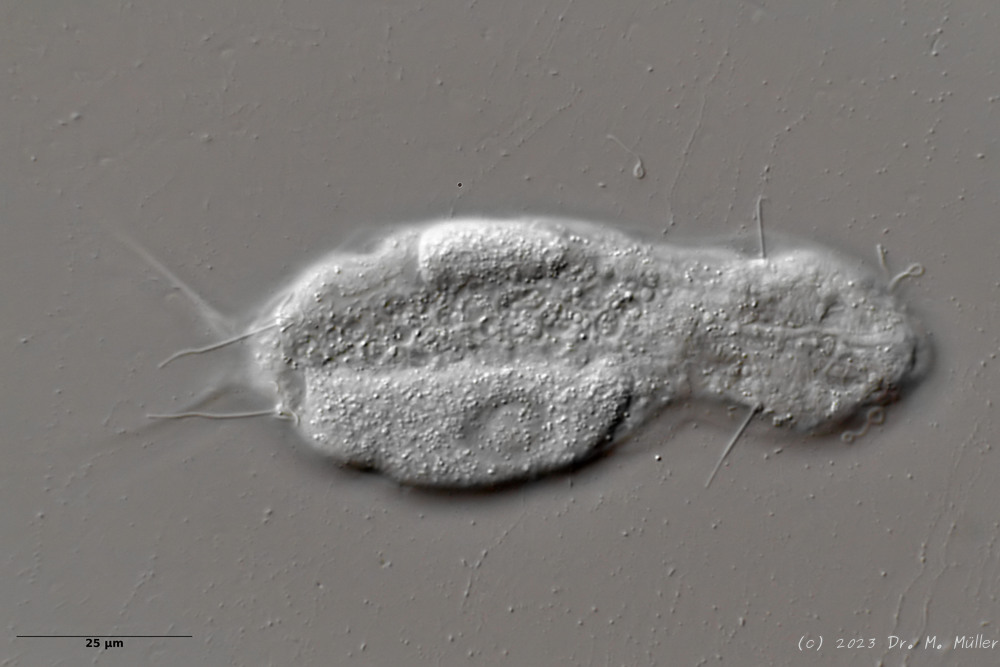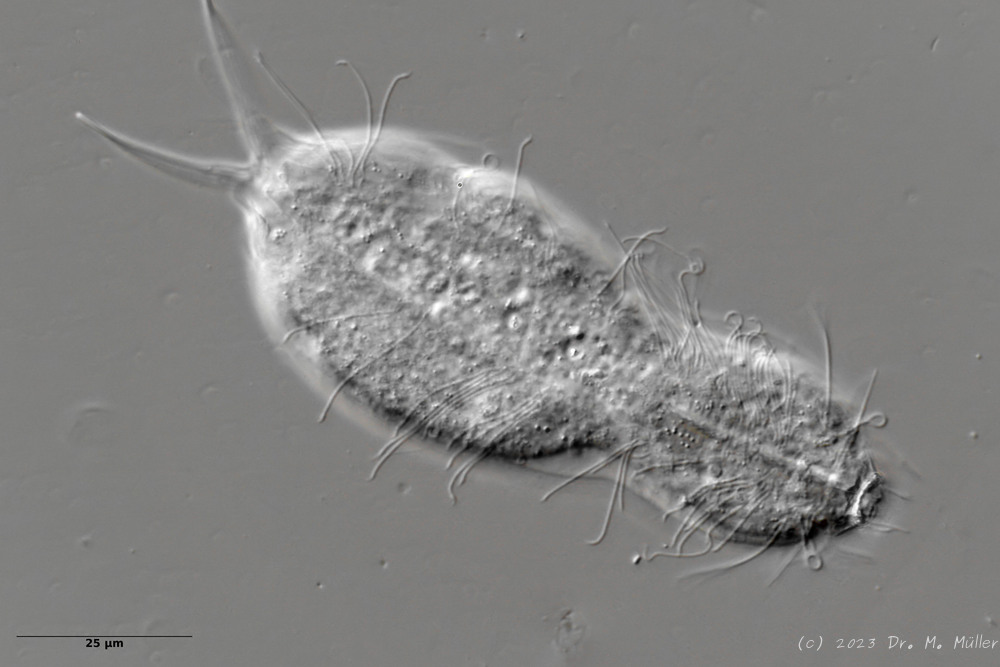Ichthydium (F. ) tanytrichum

74 µm - 126 µm
Width:
20 µm - 22 µm
Width of the head ( trilobed / around ):
17 µm - 17 µm
Width of the neck:
13 µm µm
Length of the furca:
10 µm
Adhessive tubes (pincer-shaped, pointed):
100% of furca
Pharyx ( cylindrical, terminal swollen ):
20 µm - 22 µm
Diameter of the mouth ( around ):
5.5 µm
Dorsal scales:
only triangular basal scales of terminal setolae
Ventral scales:
naked except for two rectangular, unkeeled terminal plates; rows of cilia on trunk resolved into 4 pairs of ciliate tufts; bands of cilia united on head
Oecology:
In sphagnum / bog
Similar species:
I. (F. ) skandicum : Additional dorsal scales at posterior end
Particularities:
Very long dorsally visible cilia (27µm); very rare, only a few specimens in Italy and Sweden so far.
Fundorte:
Ichthydium (Furficulichthys) tanytrichum is a very rare belly-harper, which since its first description in Italy in 1982 (Balsamo, 1982) has only been reported from Sweden - as a single specimen (Kånneby et al., 2009) . The here shown finding from the Austrian Lauchseemoor is the third worldwide known occurrence of this species.
With a size of about 130µm the animals of the found population are about the same size as the animals found in Sweden. The Italian animals of the first description were significantly smaller (ca. 74µm). Already Kånneby expressed the suspicion that the first description was based on juvenile animals, because the adult animal found by him was clearly larger with 127µm. This would also explain the somewhat different proportions to the first description.

Median cut
The lack of a continuous scaling and the flexible cuticle are characteristics of the genus Ichthydium. The typical pincer-shaped furca of the animals places I. tanytrichum clearly in the subgenus Furficulichthys, within which the species can be clearly defined by body shape and lack of scaling.

Dorsal: “sensory scales” from which the tactile hairs arise.
Other species characteristics are the triangular “sensory scales” from which the posterior tactile hairs arise. The anterior pair of tactile hairs sits on small papillae. Further scales are not present on the dorsal side.

Ventral: In the ventral region, the cilium bands are resolved into single tufts.
On the ventral side the long cilia are noticeable, with which the animal moves. With a length of about 25µm they give this species its name (“tanytrichum” = “long haired”). Typical for this species is, that these locomotive cilia are not organized in two continuous cilium bands - as otherwise common in gastrotrichs - but stand in single cilium tufts. Terminal are faintly recognizable the two large rectangular terminal plates.